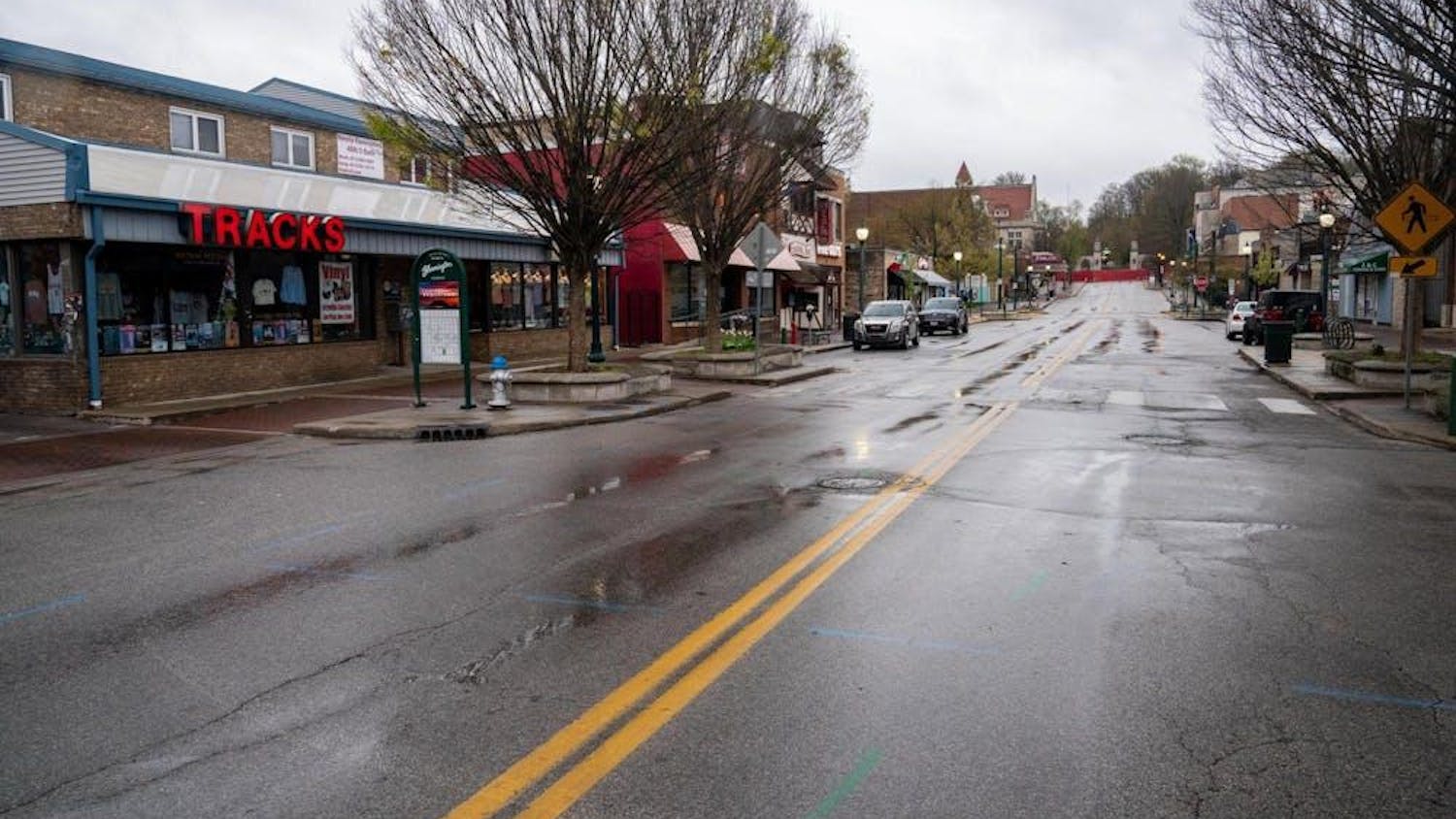When San Thant, co-president of IU’s Myanmar Student Association, heard about the 7.7 magnitude earthquake in Myanmar late last month, she checked up on her community. One of her friend's friends’ family members had died in the quake.
The spokesperson for the military government, Maj. Gen. Zaw Min Tun, placed the total death toll at 3,689, with 5,020 injured. Impacts were made even worse by the years-long civil war that’s enveloped the country.
“It felt like we were there even though we weren’t — and that was really tough, you just feel a duty to do something here, like raise funds, do anything you can to support back home,” Thant said.
The earthquake devastated central Myanmar, including its second-largest city and surrounding rural regions. According to a preliminary United Nations flash appeal, as many as 6.3 million people in Myanmar require humanitarian assistance, with thousands displaced from their homes.
Thant decided she had to do something and organized a fundraiser, hosted Monday night at the Hamilton Lugar School of Global and International Studies Shreve Auditorium. Around 40 people showed up to the event.
It featured a series of speakers, including IU professors, student leaders and a labor organizer, who discussed the earthquakes' geological causes, its devastating impact and the urgent need for international care.
Personal stories, visuals and data helped ground the conversation in both science and human experience. Following the forum, attendees were invited to a reception, outside the auditorium where they enjoyed free Burmese food.
The Myanmar Student Association, in collaboration with the IU Asian Culture Center, the IU Department of Earth and Atmospheric Sciences and the Wells Scholar Program hosted the event. It drew a diverse audience of students, faculty and Bloomington community members.
Part of Thant’s effort was fostering awareness of the earthquakes devastation and educating others on the ongoing humanitarian crisis in Myanmar, and within IU and Bloomington, something organizers said is often overlooked when it comes to disasters in Southeast Asia.
“For countries like Myanmar, we’re not politically strong — we don’t have oil or gold. So, solidarity means understanding, even just being aware of what’s happening,” Thant said. “It’s hard to ask people to do more when they don’t even know where Myanmar is. Awareness is the first step.”
All proceeds from the event, totaling more than $1,300 as of Tuesday afternoon, is supporting long-term earthquake recovery efforts through the Myanmar Student Association’s GoFundMe campaign. All funds are directed to the Narra Foundation, a Bloomington-based nonprofit that helps with disaster relief.
During the event, attendees were encouraged to learn more, donate what they could, and spread awareness both online and in their own communities.
“From the U.S., it’s hard to empathize with something happening thousands of miles away in a country you’ve never heard of,” Thant said. “This isn’t something Myanmar should withstand alone. We need global support.”
Micheal Hamburger, a professor of earth and atmospheric sciences at IU and one of the event’s speakers, said a number of factors combined to make the earthquake particularly severe.
“It was a very large earthquake, the kind that happens once or twice a year,” Hamburger said. “The problem with this one was that it struck a heavily populated area in central Myanmar, so the destruction was extreme.”
Adding to the complex situation, Myanmar’s political environment continues to hinder relief operations. In 2021, the military overthrew the country’s elected government in a coup, sparking a civil war that has since displaced over 2.5 million people and fragmented the country. Ongoing conflict between the junta and resistance groups has made it difficult for aid to reach many earthquake-affected regions.
Malaysian Prime Minister Anwar Ibrahim announced Monday he plans to meet Myanmar’s junta leader in Bangkok later in the week to discuss establishing a ceasefire.
The ceasefire would pause fighting between Myanmar’s military and other rebels, allowing aid to reach affected areas without interference from the conflict.
Hamburger emphasized the broader impacts of the quake after the forum.
“The impact on the built environment — homes, office buildings, apartments — was devastating,” he said. “The damages to infrastructure like power grids, roads and bridges complicates recovery and could affect the region for years.”
Although the forum concluded Monday evening, organizers stressed that support efforts are still ongoing with their GoFundMe campaign. The affected regions, particularly Mandalay, experienced severe infrastructure damage but international aid has been pivotal in addressing this crisis.
China pledged around $137 million in humanitarian aid, including food, medical supplies, and prefabricated homes. Additionally, medical personnel and emergency response teams were deployed to assist in relief efforts.
On March 30, the U.S. pledged $2 million through local organizations, followed by an additional $7 million on April 4, bringing the total U.S. commitment to $9 million in emergency relief to Myanmar.
India has also extended a helping hand to Myanmar by dispatching relief materials, including essential medicines, food and shelter supplies, as part of its humanitarian assistance. This was called “Operation Brahma,” which mobilized an 80-member National Disaster Response Force team, delivering a total 137 metric tons of aid and establishing field hospitals to provide urgent medical care.
Ko Zin, country coordinator of the Yaung Chi Oo Workers Association, a labor rights organization that supports Burmese migrant workers and one of the speakers of the event, emphasized the importance of outreach.
“Myanmar is in a civil war and economic crisis, our future depends on unity and global support,” he said during his speech.
CORRECTION: This story has been updated to reflect the relationship between victims of the earthquake to the event organizer.




